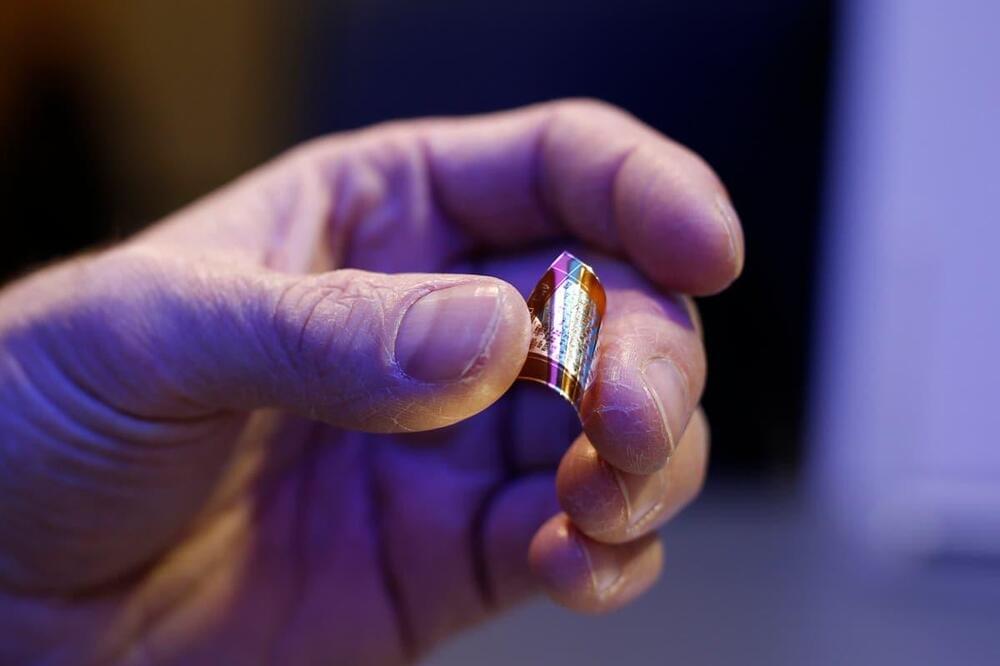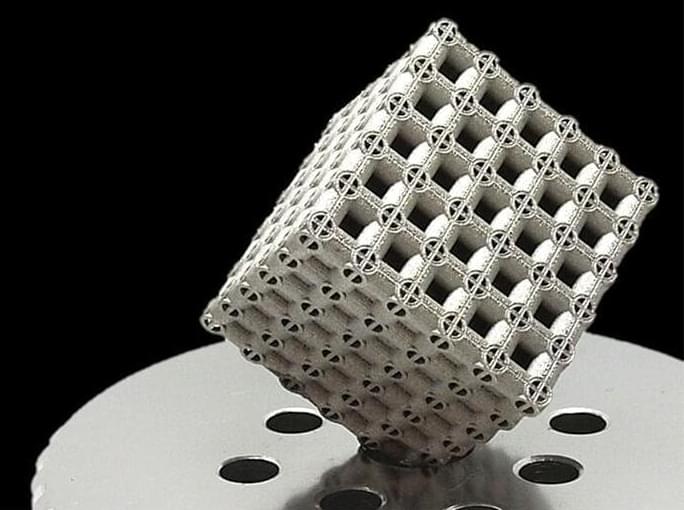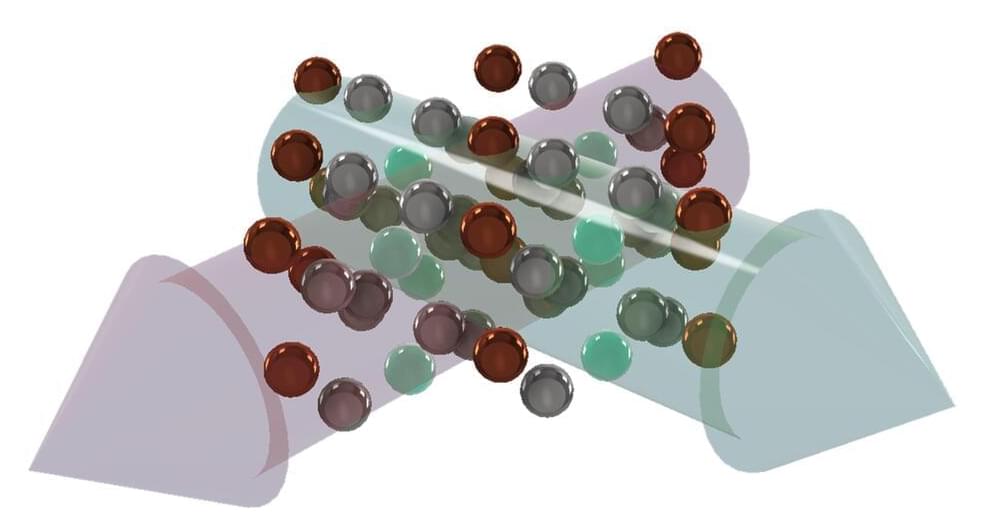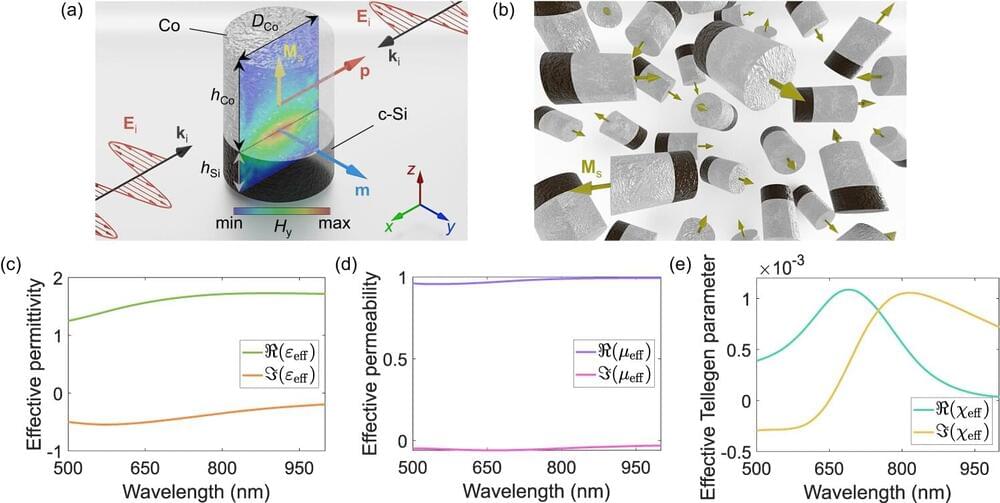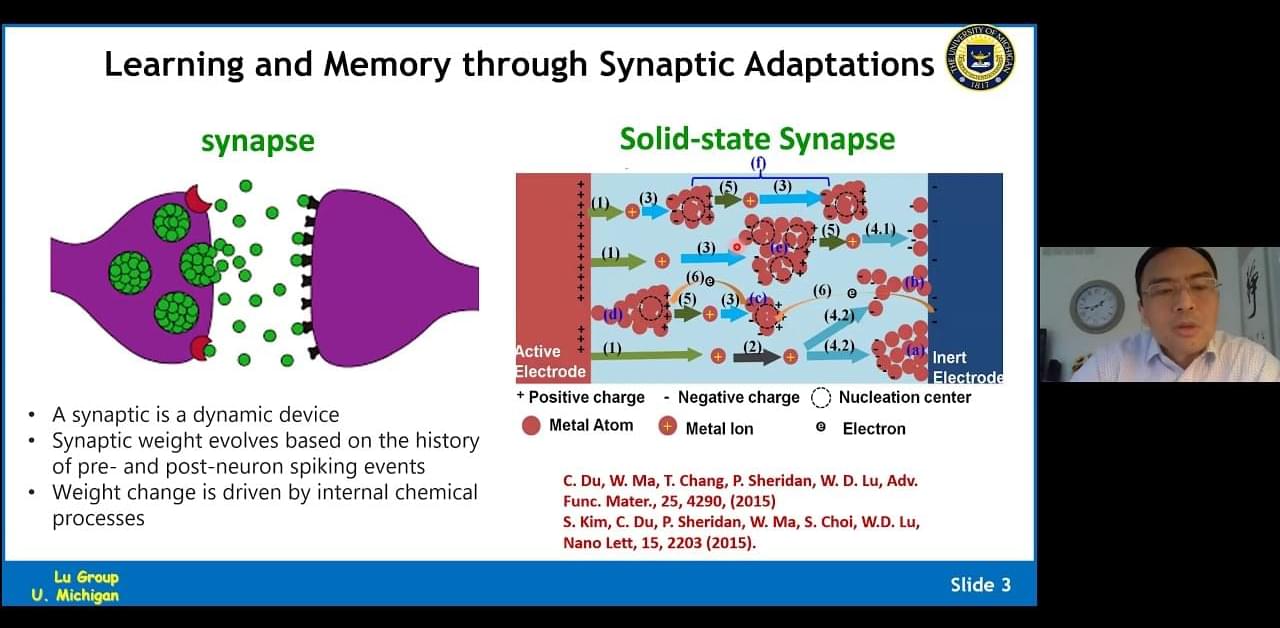Archive for the ‘materials’ category: Page 40
Feb 16, 2024
Voltage Control over Magnons
Posted by Saúl Morales Rodriguéz in categories: computing, materials
Researchers have demonstrated that magnetic spin waves called magnons can be controlled by voltage and thus could operate more efficiently as information carriers in future devices.
Magnonic devices are being developed to transmit signals, not with electrons, but with magnons—traveling waves in the magnetic ordering of a material. New work provides one of the missing elements of the magnonics toolbox: a voltage-controlled magnon transistor [1]. The device is made up of a magnetic insulator sandwiched between two metal plates. The researchers show that they can control the flow of magnons in the insulator through voltages applied to the plates. The results could lead to more-efficient magnonic devices.
A magnon can be imagined as a row of fixed magnetic elements, or “spins,” that tilt and rotate their orientations in a coordinated pattern. This “spin wave” can carry information through a material without involving the movement of charges, which can cause undesirable heating in a circuit. Magnonics—though still in its infancy—is a potentially energy-efficient alternative to traditional electronics, says Xiu-Feng Han from the Chinese Academy of Sciences. The challenge right now for the magnonics field, he says, is developing practical versions of the four basic components of a magnonic circuit: a generator, a detector, a switch, and a transistor.
Feb 16, 2024
Saturn’s ocean moon Titan may not be able to support life after all
Posted by Dan Breeden in categories: materials, space
Titan’s ocean has a volume 12 times that of all Earth’s oceans, but it may be barren of life as we know it.
Feb 16, 2024
Titanium-based metamaterial unlocks strength beyond nature
Posted by Dan Breeden in categories: biotech/medical, materials
A groundbreaking titanium metamaterial with unparalleled strength and versatility could revolutionize manufacturing and high-speed aviation.
A lightweight, high-strength titanium material has been engineered that could lead to stronger medical devices and innovative vehicle and spacecraft designs. The research team used a common titanium alloy, Ti-6Al-4V, to construct the “metamaterial”, a term used to describe an artificial material that possesses unique properties not observed in nature — meta means “beyond” in Greek.
Many such intricate and surprisingly strong structures do exist in nature, like that of the Victoria water lily. Native to South America, this gigantic floating leaf is strong enough to support an adult owing to the unique lattice structure of it veins.
Feb 15, 2024
Altermagnetism experimentally demonstrated
Posted by Shailesh Prasad in category: materials
Ferromagnetism and antiferromagnetism have long been known to scientists as two classes of magnetic order of materials. Back in 2019, researchers at Johannes Gutenberg University Mainz (JGU) postulated a third class of magnetism, called altermagnetism. This altermagnetism has been the subject of heated debate among experts ever since, with some expressing doubts about its existence.
Recently, a team of experimental researchers led by Professor Hans-Joachim Elmers at JGU was able to measure for the first time at DESY (Deutsches Elektronen-Synchrotron) an effect that is considered to be a signature of altermagnetism, thus providing evidence for the existence of this third type of magnetism. The research results were published in Science Advances.
Feb 15, 2024
A new optical metamaterial makes true one-way glass possible
Posted by Shailesh Prasad in category: materials
A new approach has allowed researchers at Aalto University to create a kind of metamaterial that has so far been beyond the reach of existing technologies. Unlike natural materials, metamaterials and metasurfaces can be tailored to have specific electromagnetic properties, which means scientists can create materials with features desirable for industrial applications.
The new metamaterial takes advantage of the nonreciprocal magnetoelectric (NME) effect. The NME effect implies a link between specific properties of the material (its magnetization and polarization) and the different field components of light or other electromagnetic waves. The NME effect is negligible in natural materials, but scientists have been trying to enhance it using metamaterials and metasurfaces because of the technological potential this would unlock.
The work is published in the journal Nature Communications.
Feb 14, 2024
Wei Lu (U Mich) Neuromorphic Computing Based on Memristive Materials and Devices
Posted by Dan Breeden in categories: computing, materials
Feb 13, 2024
Beyond Classical Physics: Scientists Discover New State of Matter With Chiral Properties
Posted by Shubham Ghosh Roy in categories: materials, quantum physics
An international research group has identified a novel state of matter, characterized by the presence of a quantum phenomenon known as chiral current.
These currents are generated on an atomic scale by a cooperative movement of electrons, unlike conventional magnetic materials whose properties originate from the quantum characteristic of an electron known as spin and their ordering in the crystal.
Feb 13, 2024
Ancient Human Artifact Was Made With Extraterrestrial Material, Scientists Say
Posted by Shubham Ghosh Roy in categories: chemistry, materials
Link : https://trib.al/wOzZc3J
Talk about out-of-this-world bling!
Spanish researchers have discovered that two iron artifacts from a hoard of precious treasure that dates back to the Late Bronze Age — before man started the widespread smelting of iron — contain iron from meteorites estimated to be around 1 million years old.
Continue reading “Ancient Human Artifact Was Made With Extraterrestrial Material, Scientists Say” »
Feb 13, 2024
LG Chem is building a $3B EV battery cathode factory — the largest in the US [Update]
Posted by Shailesh Prasad in categories: energy, materials
LG Chem is building a $3 billion battery cathode factory for EVs in Tennessee – and it just inked a multi-billion dollar deal with GM.
LG Chem has secured a long-term cathode material supply contract with General Motors (GM) worth $19 billion. The contract will commence in 2026 – when the factory is expected to come online – and run until 2035.
Ultium Cells, a joint venture between LG Energy Solution and GM, will primarily use the NCMA (nickel, cobalt, manganese, aluminum) cathode materials made at LG’s Tennessee factory.
